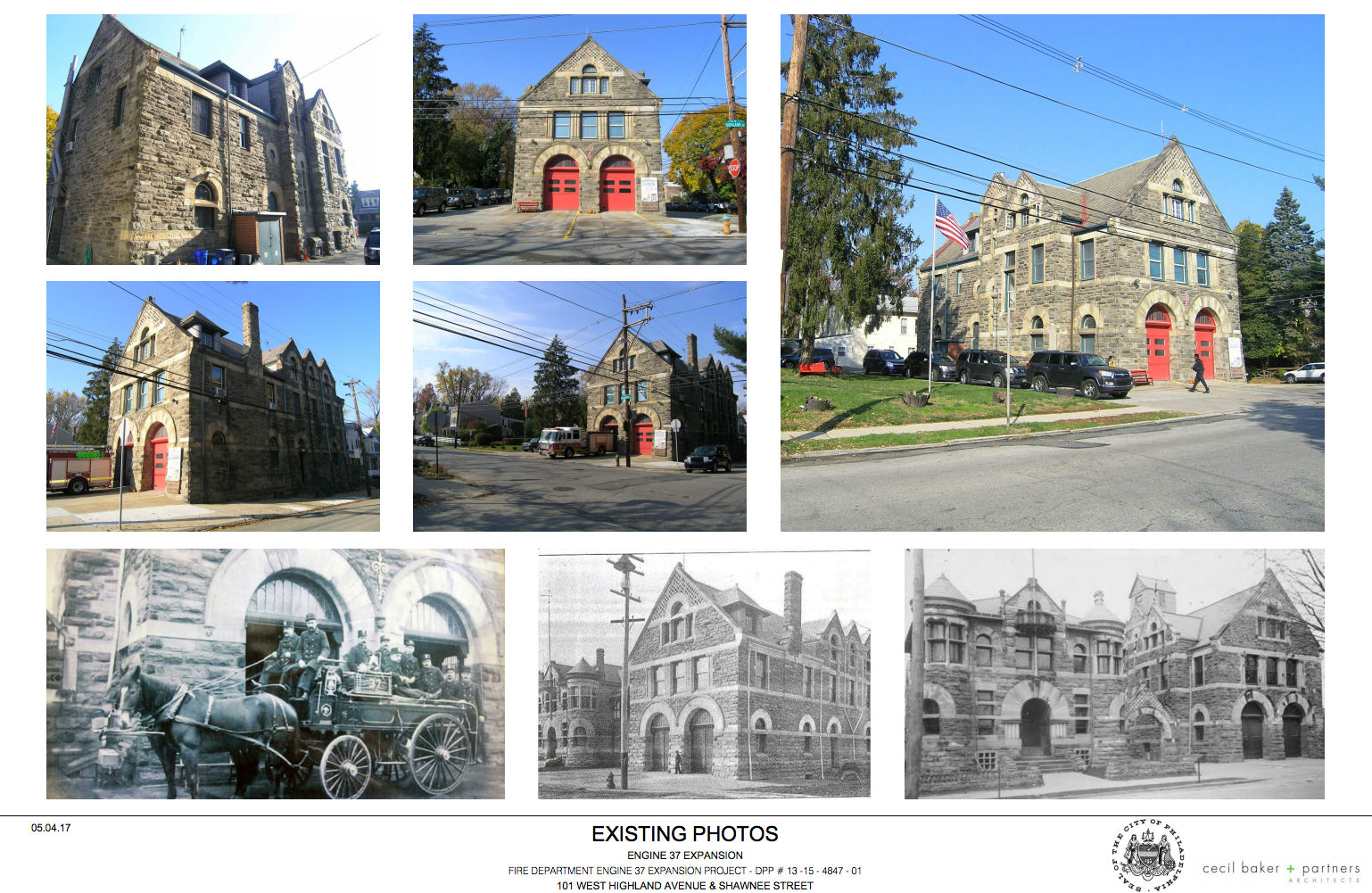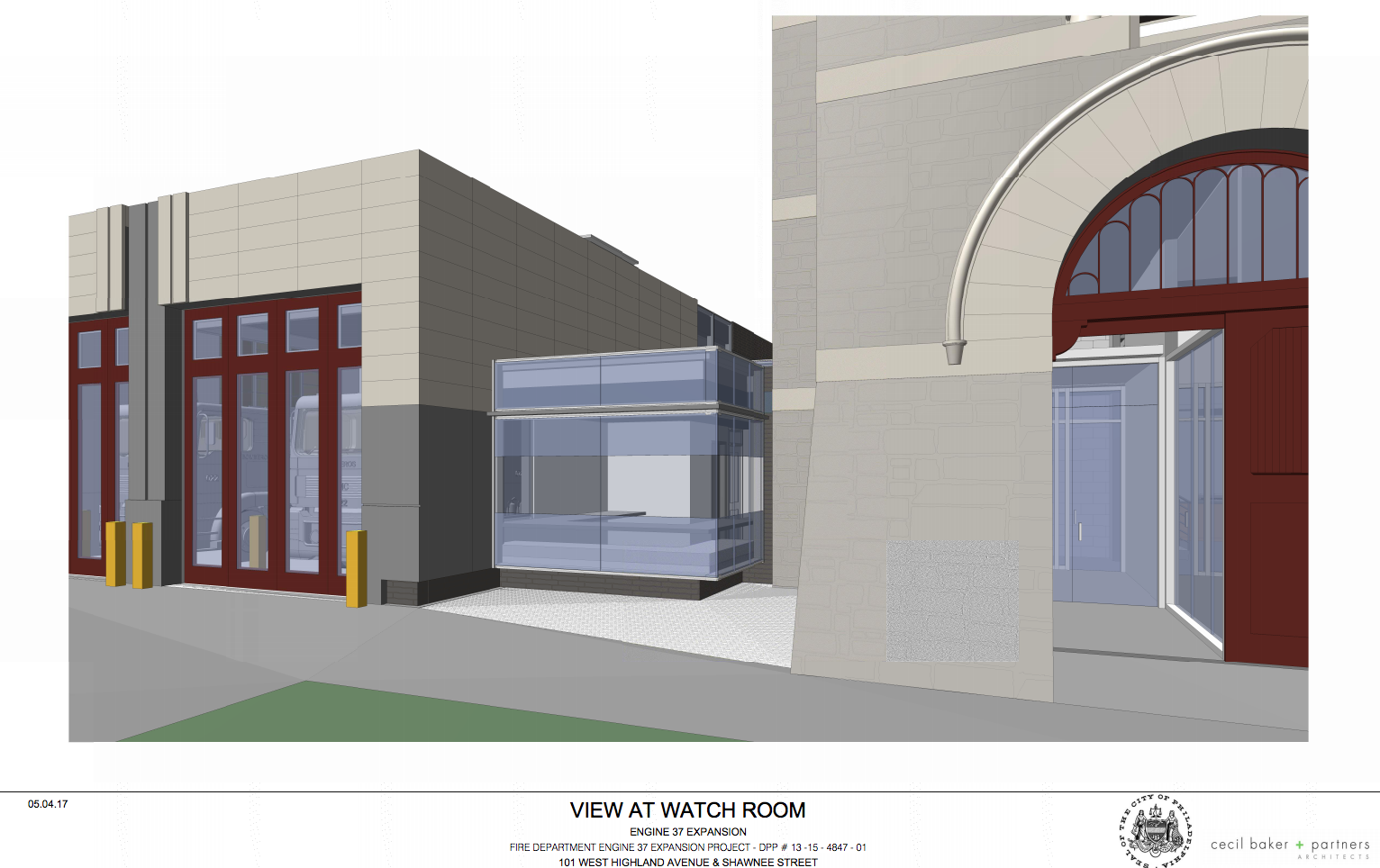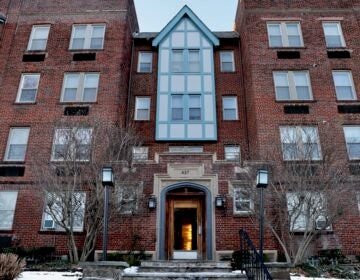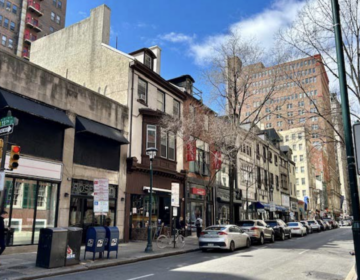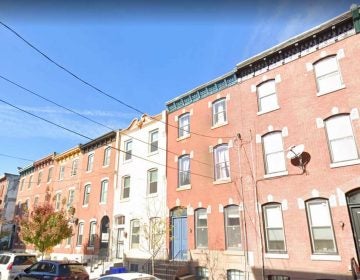Chestnut Hill firehouse’s contemporary addition supported by preservation committee
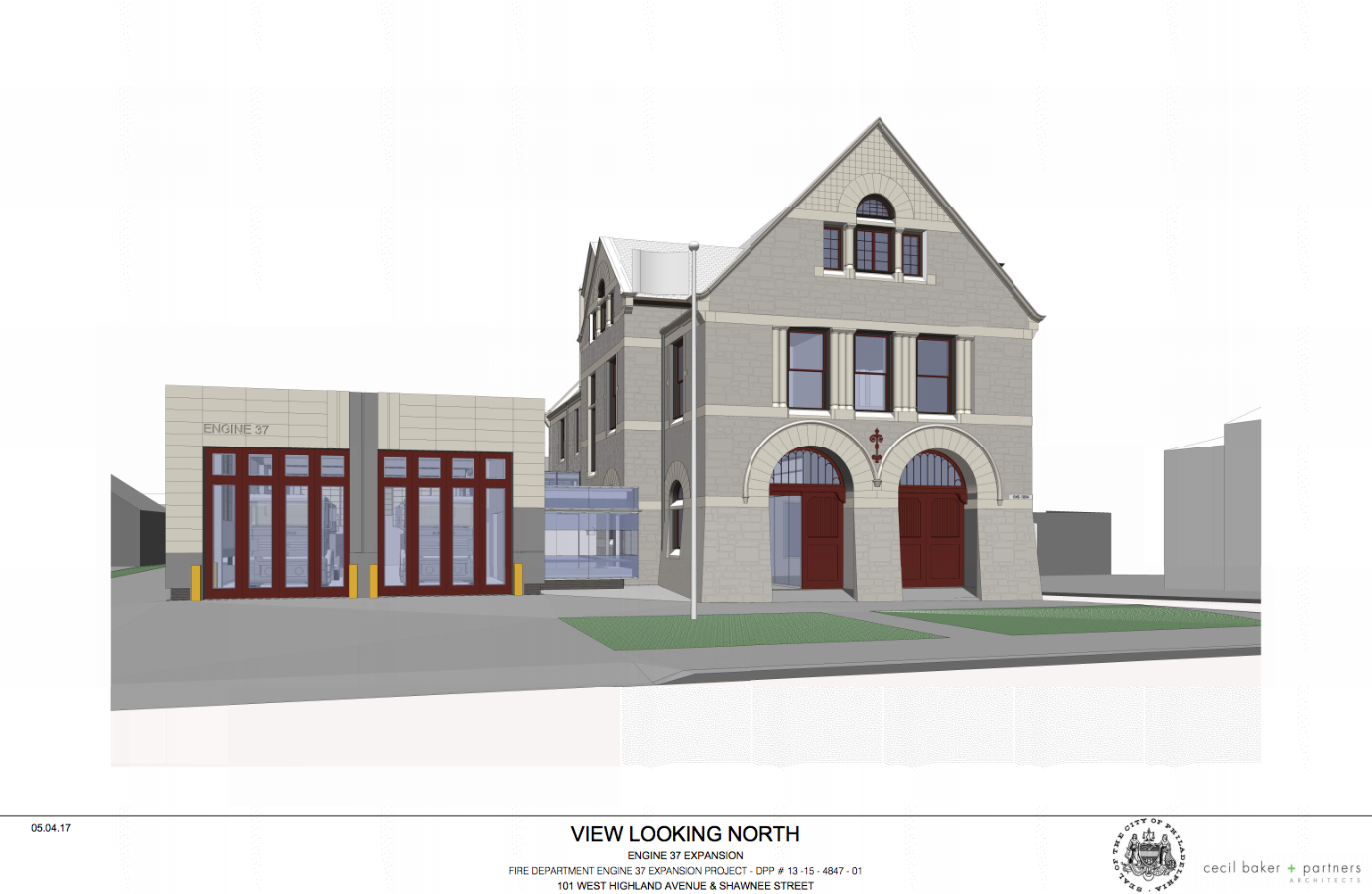
Chestnut Hill’s Engine 37 is finally getting a building that can accommodate contemporary fire-fighting vehicles. The oldest fire station in Philadelphia will remain in use, but its almost 125-year-old building will soon be joined be a new garage with portals large enough for modern equipment.
Engine 37’s station sits at 101 West Highland Avenue, just to the west of Germantown Avenue. Long considered an architectural gem of the neighborhood, the Fire Department and the City have been discussing its fate with community groups for more than five years. At Tuesday’s meeting of the Historical Commission’s Architectural Committee, Cecil Baker + Partners—the firm hired to renovate Engine 37—revealed their proposal for its future.
To house modern vehicles, they propose a one-story, two-bay structure to be built on the city-owned lot where an adjoining police station once stood (until it was demolished in 1959). The new building will be connected to the existing building by a glass walkway that will facilitate passage between the two buildings, addressing fears that a separate facility for vehicles could slow response times.
The new structure will be built of materials meant to complement the existing firehouse, which is predominantly made of Wissahickon schist with bands of sandstone. Constructed in 1894 by John Windrim, the building is a fine example of Richardsonian Romanesque architecture. The building was added to the local historic register in 2015.
But Cecil Baker + Partners didn’t want to try and match the intricate façade of the firehouse. Instead it will try to offer a simple modernist accompaniment using material that pays homage to the original without distracting from the historically-protected structure.
“The Windrim is a very beautiful building and we wanted to suggest the contemporary building blocks that were part of his architecture,” said Baker.
The Architectural Committee voiced a few concerns, primarily about plans to insulate the walls of the old firehouse. New walls are planned for the interior to allow better protect the firefighters from the winter cold. The committee asked that dew point and temperature impact studies be conducted, out of fear that the masonry won’t be able to handle the freeze-thaw cycles.
Eric Leighton, the lead architect on the project, shared the committee’s concern and testified that much of the stone is indeed in poor shape. Cecil Baker Partners is working with the preservation firm Campbell & Thomas to ensure the walls are structurally sound and to identify what needs to be replaced. (Currently the firehouse’s roof repairs are being completed and all the slate and copper gutters replaced.)
Leighton said that his firm is working with a masonry supplier to identify the best materials for the new garage structure. Real quarried stone is a possibility and the intention will be to find a material that matches the sandstone of Windrim’s 1894 building.
The quest for an up-to-date firehouse dates back to at least 2012, when Engine 37 approached the Chestnut Hill Community Association about the problems of matching contemporary firefighting equipment with a station built in the Victorian-era.
Due to the physical constraints of the building, Engine 37’s vehicles troubles have dated back to, roughly, the First World War. Originally made to shelter horse-drawn carriages, the building struggled for over 100 years to accommodate engine-powered vehicles.
The firehouse’s garage doors are nine-and-a-half feet wide, while modern trucks are only a foot smaller in width. In recent years, the firefighters have been forced to remove their trucks’ security railings to squeeze them in. Even then the fit was worryingly tight.
Although Windrim’s building will no longer hold vehicles, Cecil Baker Partners’ plans to still keep it in use as a space for equipment storage, sleeping, dining, and recreational quarters for the people on duty.
According to a 2015 report the expansion will begin construction in 2018.
The only public comment came from Patrick Grossi, advocacy director for the Preservation Alliance of Greater Philadelphia. He praised Baker’s design and the willingness of the Fire Department and the City to maintain the historic building. The Preservation Alliance recently nominated another firehouse designed by Windrim in South Philadelphia, Engine 46, at 1401 Water Street. It is no longer in use by the Fire Department.
“This is a great model and I’d love to see more of it,” said Grossi.
WHYY is your source for fact-based, in-depth journalism and information. As a nonprofit organization, we rely on financial support from readers like you. Please give today.



